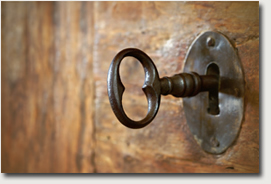
Behavioral Apparatus Museum: Responses
Super-Sized Key for Use with Monkeys
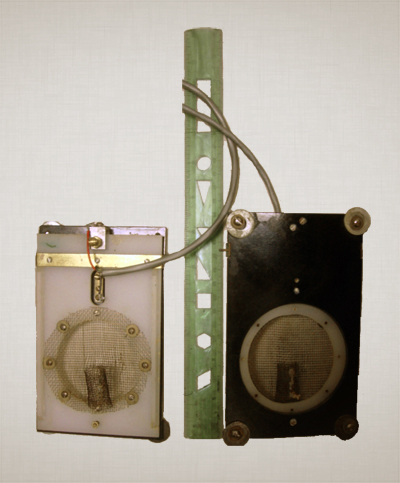 These keys were custom manufactured by the Ralph Gerbrands Company for experiments with monkeys. Except for their large size (7 inches by 4 inches), they are similar in form and operation to the smaller Harvard/Gerbrands pigeon keys also on display in this room. The center of each key has been cut out and the plastic replaced with a screen mesh behind which a stimulus can be affixed. These keys were mounted in the chamber as described for the Harvard/Gerbrands pigeon key.
These keys were custom manufactured by the Ralph Gerbrands Company for experiments with monkeys. Except for their large size (7 inches by 4 inches), they are similar in form and operation to the smaller Harvard/Gerbrands pigeon keys also on display in this room. The center of each key has been cut out and the plastic replaced with a screen mesh behind which a stimulus can be affixed. These keys were mounted in the chamber as described for the Harvard/Gerbrands pigeon key.
Telegraph-Type Key (1940s)
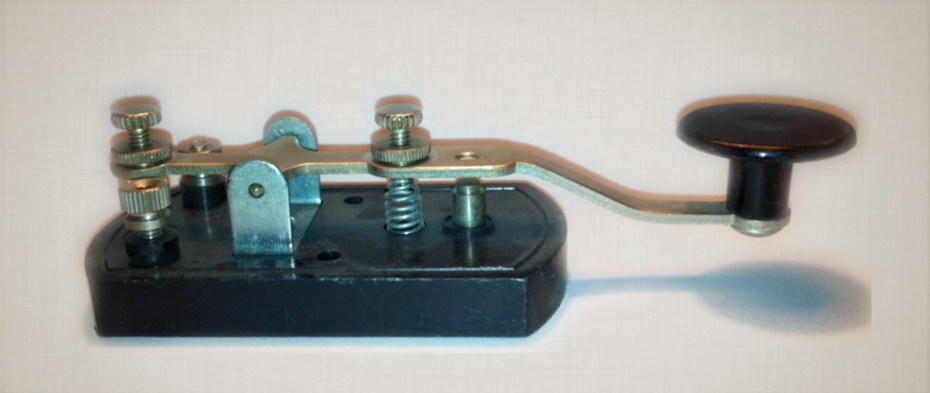 Telegraphic communications involved a cluster of inventions and innovations in the mid to late 1800s that had the same revolutionary effect on society then that digital technology has had in more recent times. At the heart of telegraphic communication was the telegraph key, a simple device that allowed electric current to be sent in pulses over wires to remote locations. Around the 1940s, the telegraph key found its way into behavioral research, perhaps in part because one of the pioneers of behavior analysis, Fred Keller, was involved in teaching Morse Code transmission to American soldiers in World War II. He thus learned of the usefulness of the telegraph key with human participants. The telegraph key was a durable and reliable device for recording a simple human response, much in the same way levers are used to record simple responses of rats. The telegraph key was replaced in human operant research by more refined response measurement devices (“transducers”) that allowed a more consistent response faster and more reliable response tracking, but for many years the telegraph key played a useful role as a means for studying human operant behavior.
Telegraphic communications involved a cluster of inventions and innovations in the mid to late 1800s that had the same revolutionary effect on society then that digital technology has had in more recent times. At the heart of telegraphic communication was the telegraph key, a simple device that allowed electric current to be sent in pulses over wires to remote locations. Around the 1940s, the telegraph key found its way into behavioral research, perhaps in part because one of the pioneers of behavior analysis, Fred Keller, was involved in teaching Morse Code transmission to American soldiers in World War II. He thus learned of the usefulness of the telegraph key with human participants. The telegraph key was a durable and reliable device for recording a simple human response, much in the same way levers are used to record simple responses of rats. The telegraph key was replaced in human operant research by more refined response measurement devices (“transducers”) that allowed a more consistent response faster and more reliable response tracking, but for many years the telegraph key played a useful role as a means for studying human operant behavior.
Lindsley Operandum (1950s)
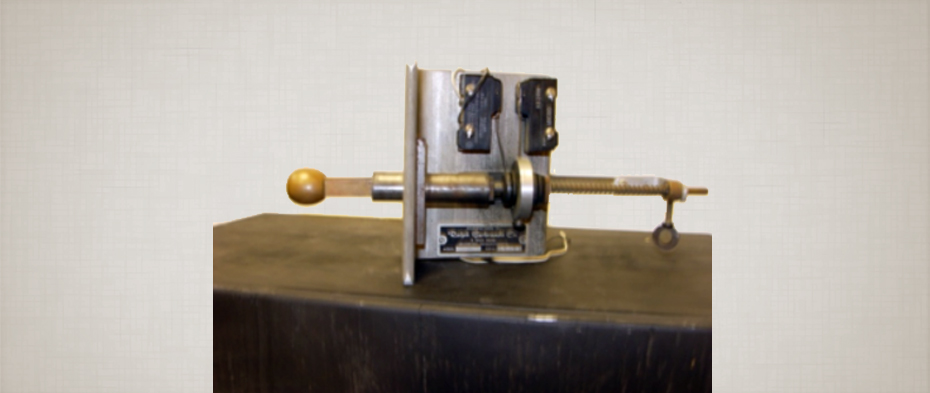 This plunger-type response recording device was conceived in the 1950s by psychologist Ogden Lindsley for the study of operant responses of psychiatric patients. It was widely adopted for use in studies of both human behavior and that of other primates such as rhesus monkeys and baboons. It often was the response device of choice with the latter two species because it was virtually indestructible. When the spring-loaded brass plunger (on the left) is pulled outward, it activates a small electrical switch (called a microswitch). A second microswitch is activated when the plunger is released. This Lindsley Operandum was manufactured by the Ralph Gerbrands Company.
This plunger-type response recording device was conceived in the 1950s by psychologist Ogden Lindsley for the study of operant responses of psychiatric patients. It was widely adopted for use in studies of both human behavior and that of other primates such as rhesus monkeys and baboons. It often was the response device of choice with the latter two species because it was virtually indestructible. When the spring-loaded brass plunger (on the left) is pulled outward, it activates a small electrical switch (called a microswitch). A second microswitch is activated when the plunger is released. This Lindsley Operandum was manufactured by the Ralph Gerbrands Company.
Response Button for Humans
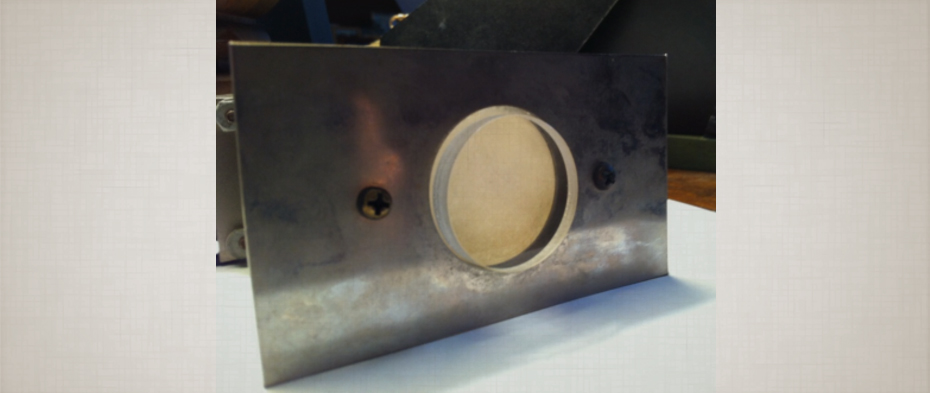 This button is somewhat analogous to the pigeon key. Pressing the plastic disc activates a switch located on either side of the key. The plastic button is clear, but has been covered with a velum-like paper to make it translucent, presumably so that it can be transilluminated by different colored stimulus lamps. The device is 2.25 inches wide by 4 inches long, and the button is 1.25 inches in diameter. It was manufactured by the Grason-Stadler Company (Model E 86470 A).
This button is somewhat analogous to the pigeon key. Pressing the plastic disc activates a switch located on either side of the key. The plastic button is clear, but has been covered with a velum-like paper to make it translucent, presumably so that it can be transilluminated by different colored stimulus lamps. The device is 2.25 inches wide by 4 inches long, and the button is 1.25 inches in diameter. It was manufactured by the Grason-Stadler Company (Model E 86470 A).
Recording Aggressive Responses of Humans
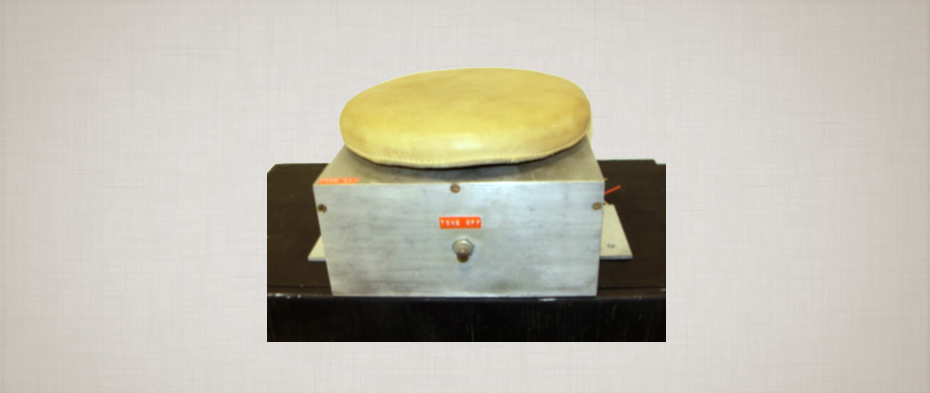 This device consists of a padded surface that when hit with a strong force activates a microswitch located beneath the pad. The device was used by sociologist David R. Schmitt, one of the pioneers in the experimental analysis of human social behavior.
This device consists of a padded surface that when hit with a strong force activates a microswitch located beneath the pad. The device was used by sociologist David R. Schmitt, one of the pioneers in the experimental analysis of human social behavior.

